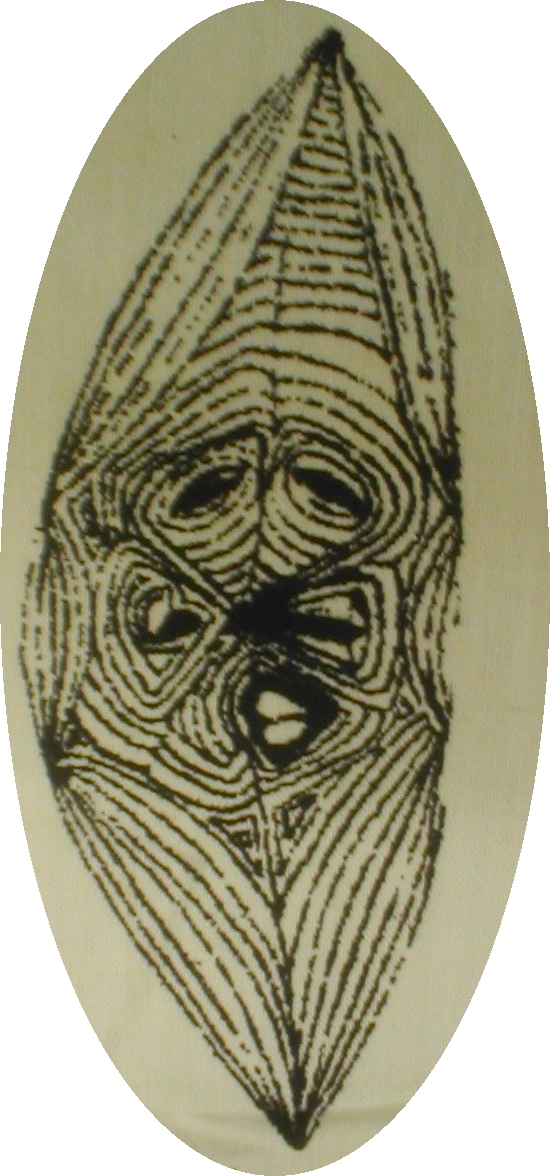
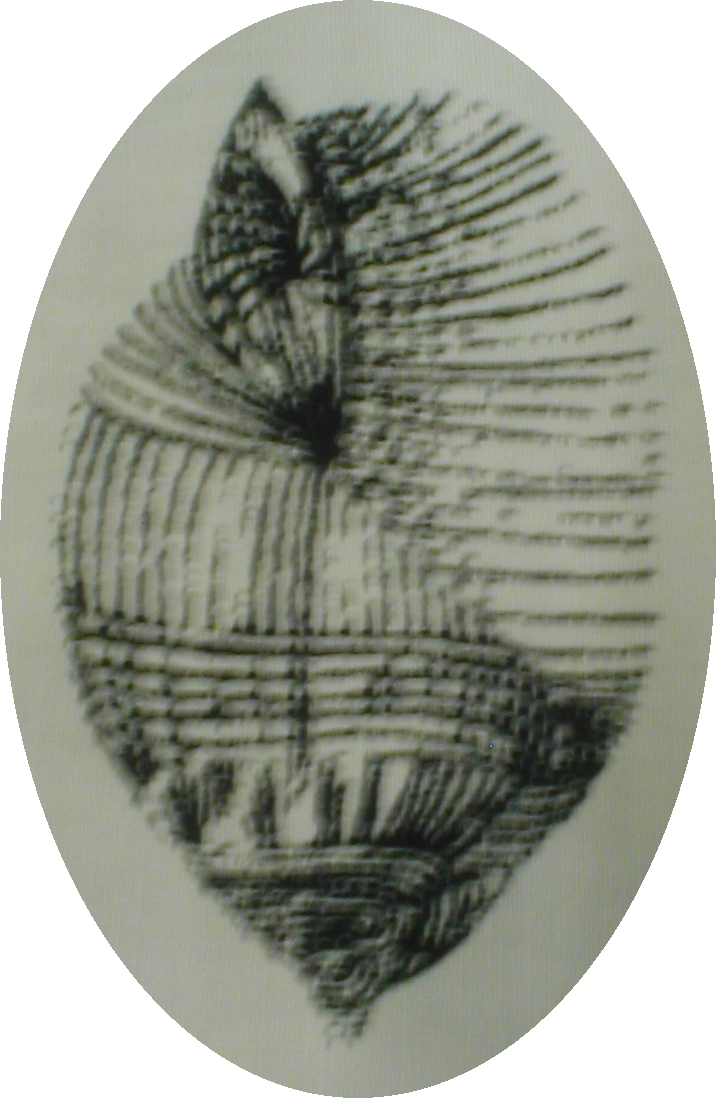
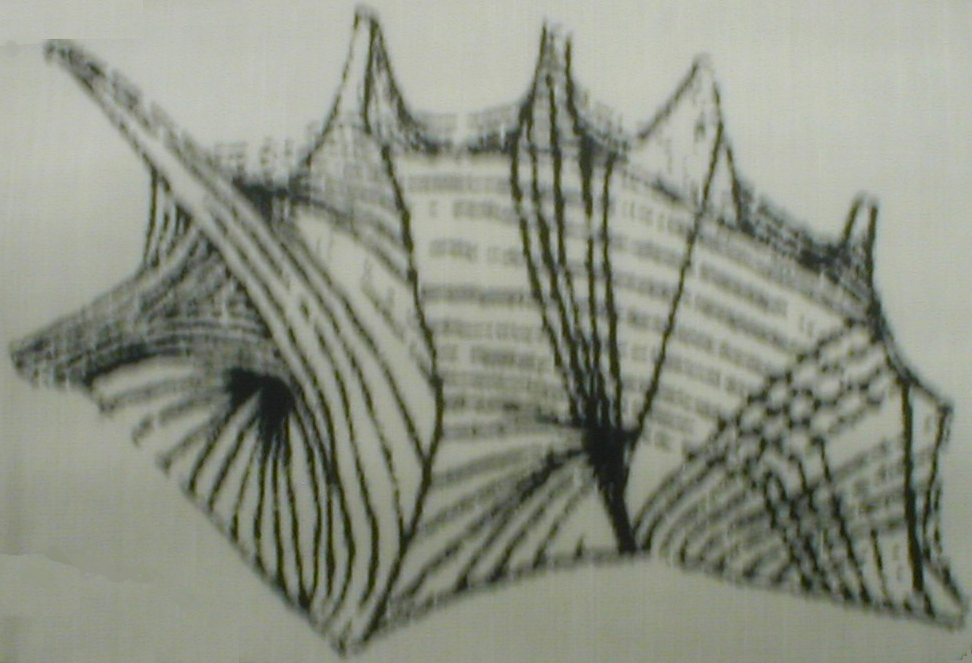
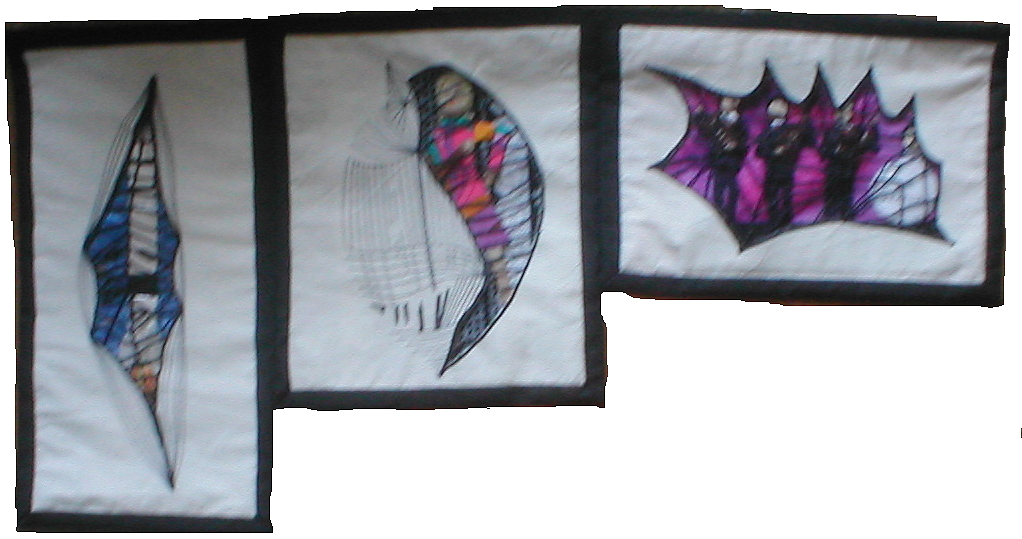
This piece was made for a FET exhibition held at the Warner Archive, Braintree, 'inspired by' fabrics from the Archive. My chosen fabric was called 'Shells and Shapes', and dated from 1955. On this fabric a number of shell shapes are rendered as linear designs, which made me think of sculptures in wire. But a three-dimensional wire object is a cage, and cages are designed to contain things which perhaps want to escape. What was contained in the 1950s and wanted to escape? Answer: the 1960s. Hence the title.
To pursue this theme, I chose three of the shell motifs and selected images from the 1960s to fit inside them.
 |
 |
 |
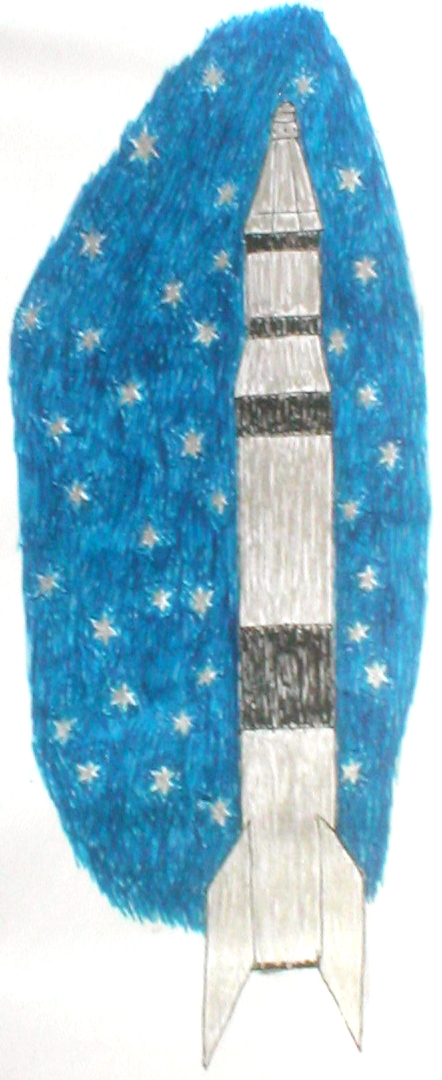 |
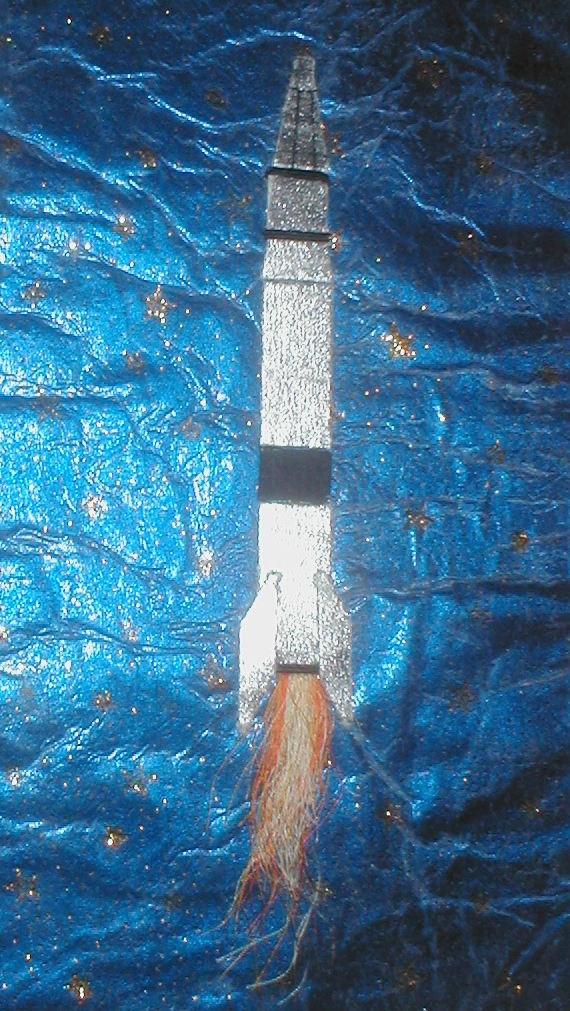 |
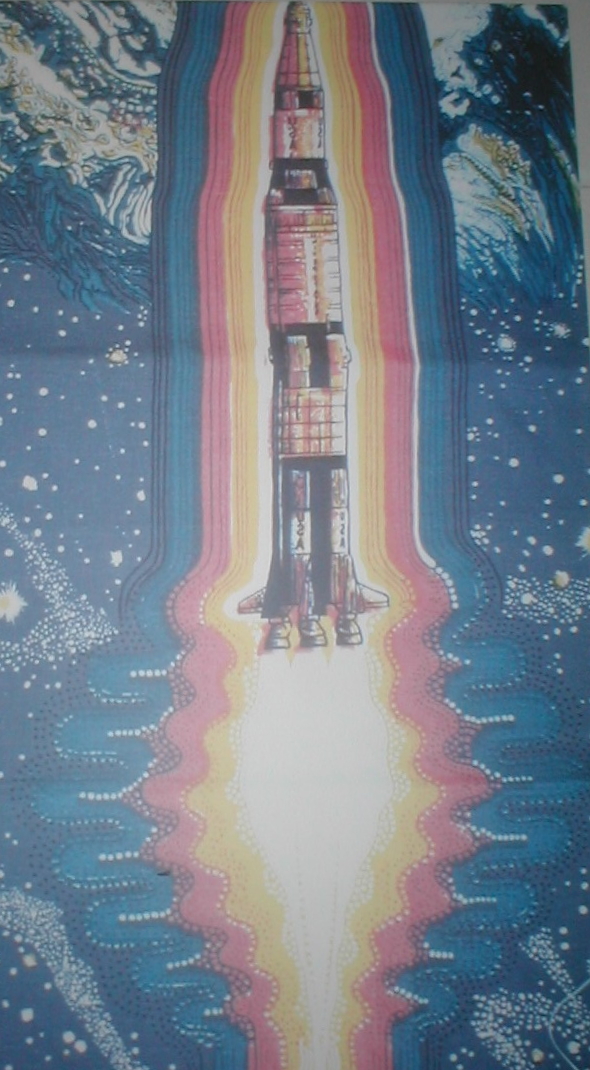 |
I saw this as a vertical, and the obvious 1960s image to fit it was the rocket on the way to the Moon. First, my original sketch. Next, the piece as realised. Third, for comparison, detail of a Warner's fabric commemorating the first moon landing in 1969, which made the subject particularly appropriate for its context.
The background is a blue metallic fabric with an organza decorated with stars bonded on top. It is difficult to photograph it, because of the reflective nature of the fabric, but perhaps the different degrees of darkness look better on the screen than in print. The rocket itself is made in sections, with silver and black fabrics and a little black embroidery. The fiery tail is made from rayon thread.
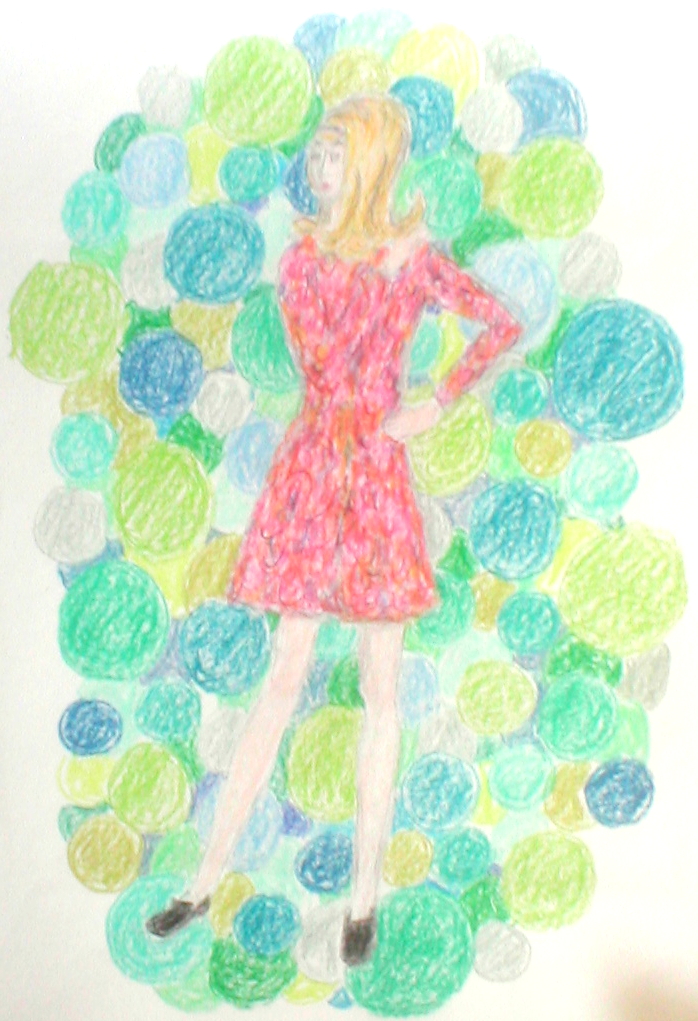 |
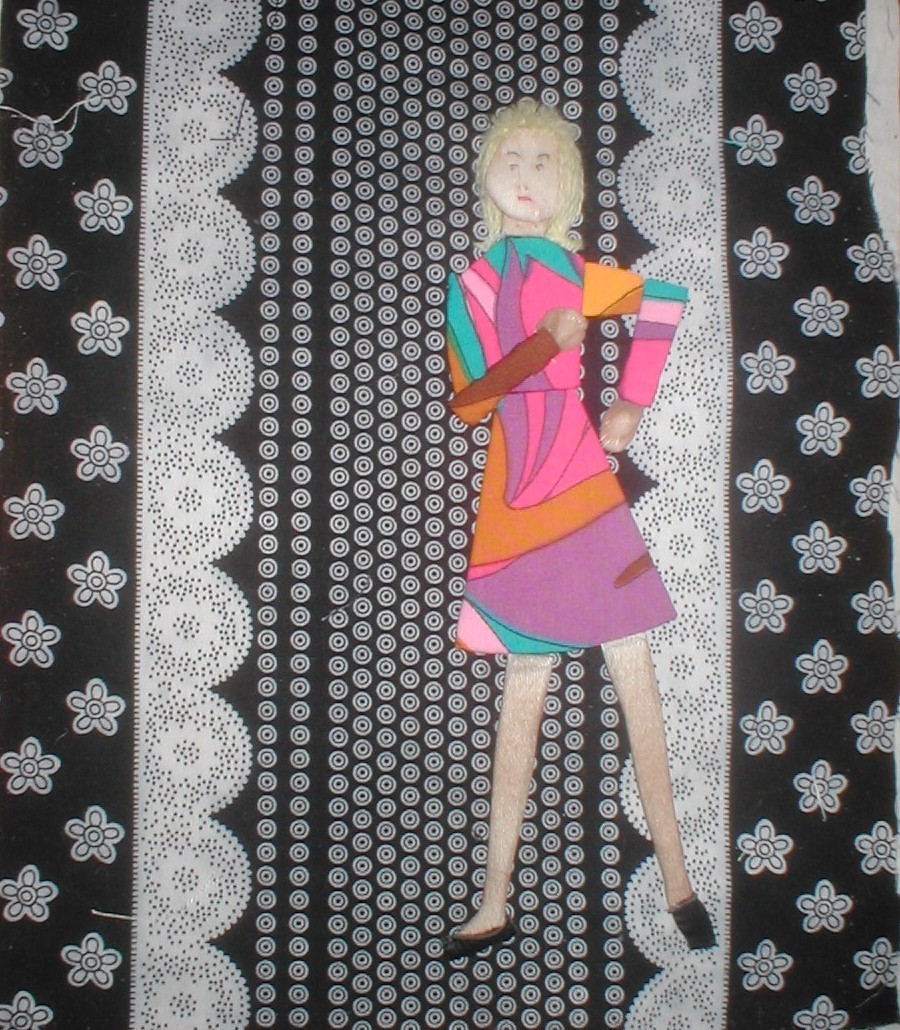 |
Here the complex patterning in the left hand side of the shell suggested a solid form, with the more open 'cage' on the right. A suitable image to fit in this cage was that highly distinctive 1960s figure, a girl in a mini-skirt. I still have some dress patters from that time to remind me of both the clothes and the people who were illustrated wearing them. The background fabric came from my bit-bag, and seemed appropriate because of the Mary Quant style daisies. The dress is a genuine 1960s fabric, also from my bit-bag.
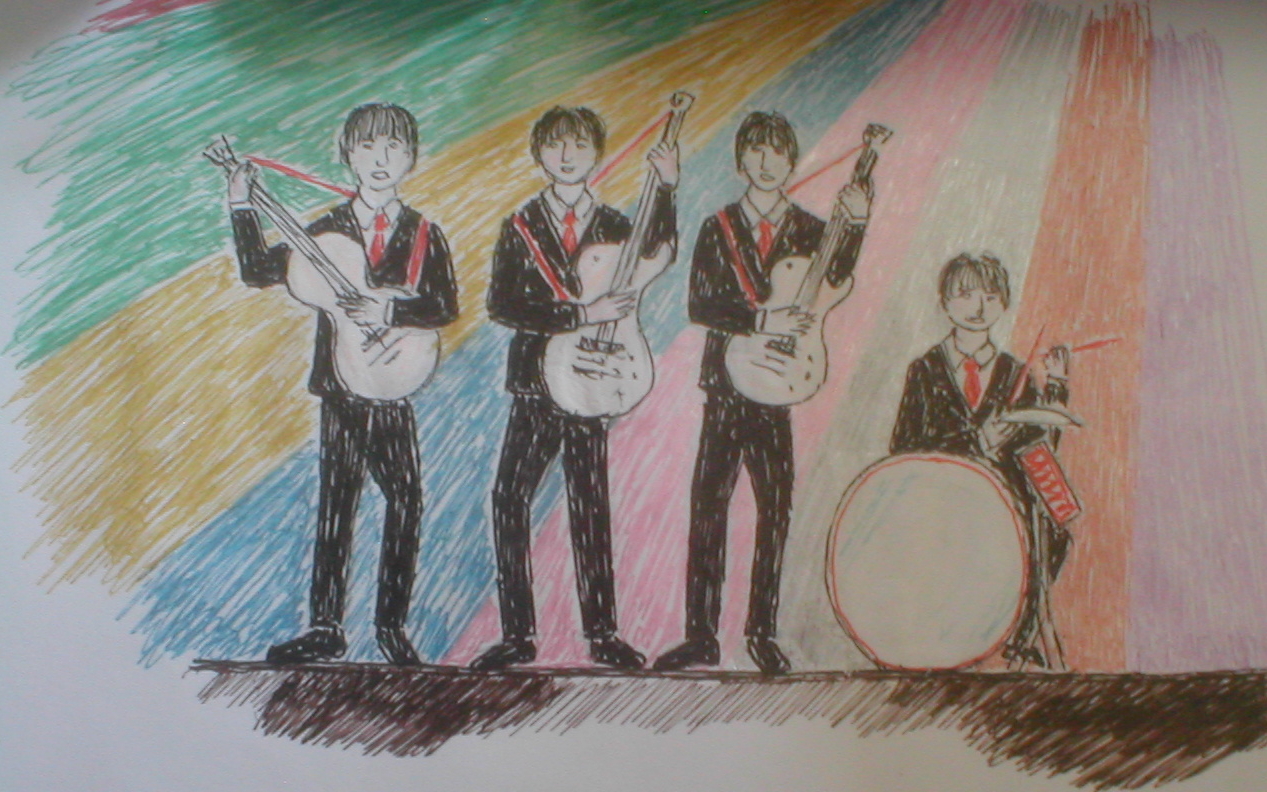 |
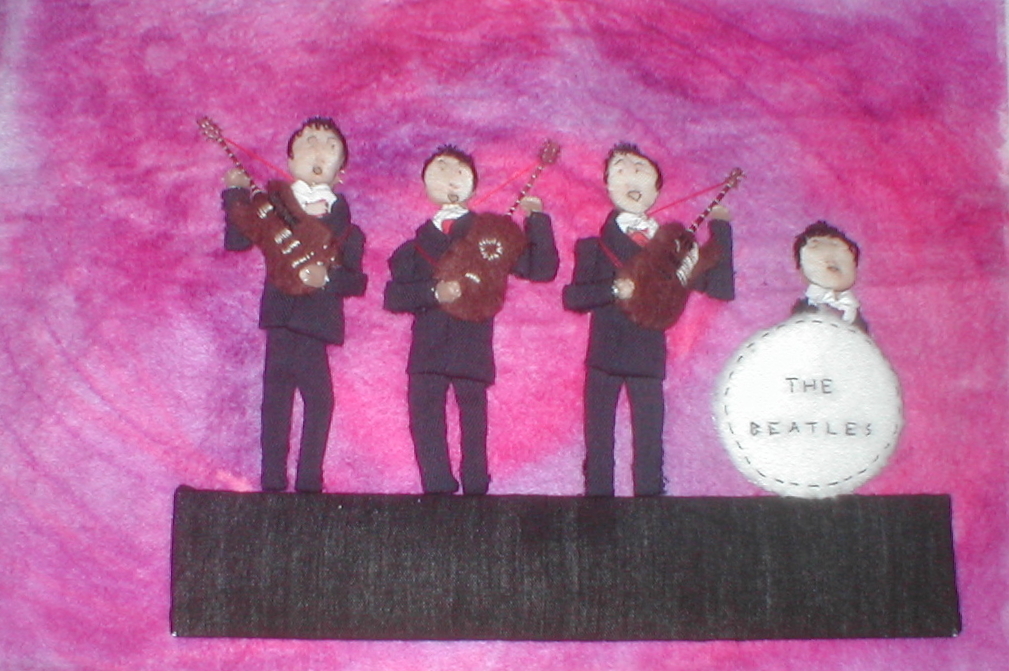 |
The obvious 1960s image to fit this format is the Beatles. I have chosen the early loveable mop-top lads from Liverpool view of them, though I have produced my own generalised picture (of course with an element of memory) rather than copied a specific image of the period. The background is a piece of transfer-painted felt, originally made as an experiment (such things do sometimes come in useful, you see). The figures are dressed in polyester suits and have Liberty ties (my bit-bag again). The instruments were made in felt and embroidered.
After I had made the 1960s images, which was fiddly but fun, I proceeded to the shells or cages. All were made in the same way, using machine embroidery and a soluble fabric. The following images show the process of making one of them. The shell is shown at a ninety degree rotation from the source image and its final position in use.
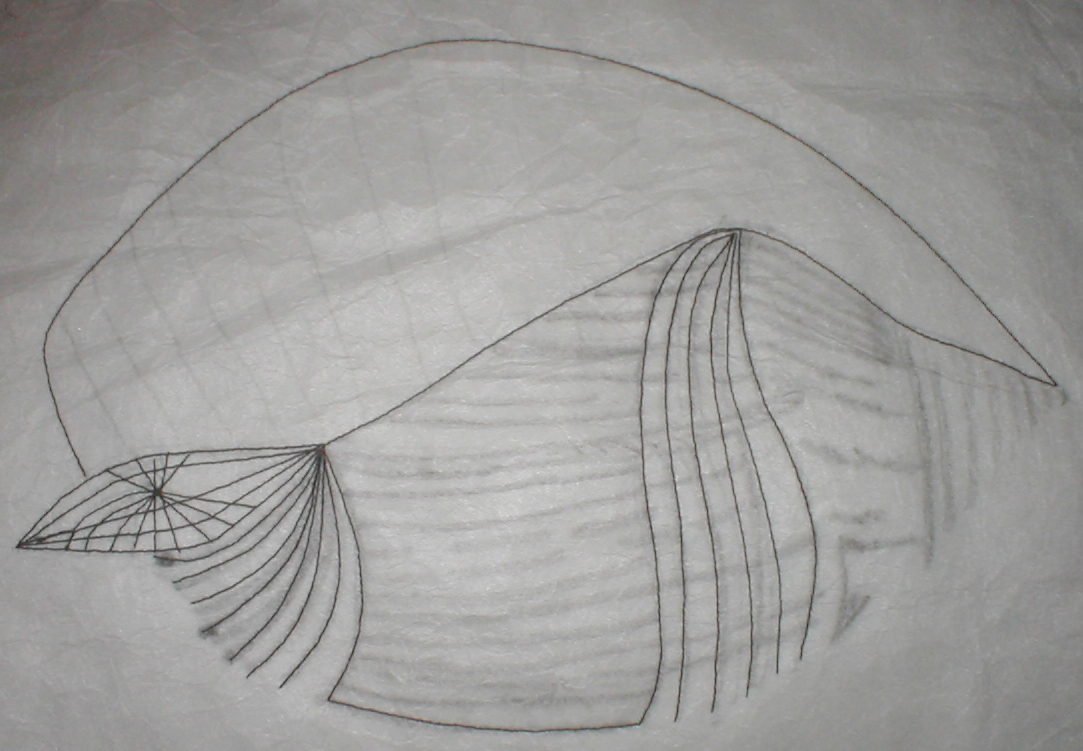
The design is drawn on Stitch n' Tear and placed on top of the background fabric (calico). Machining along the drawn lines is in progress.
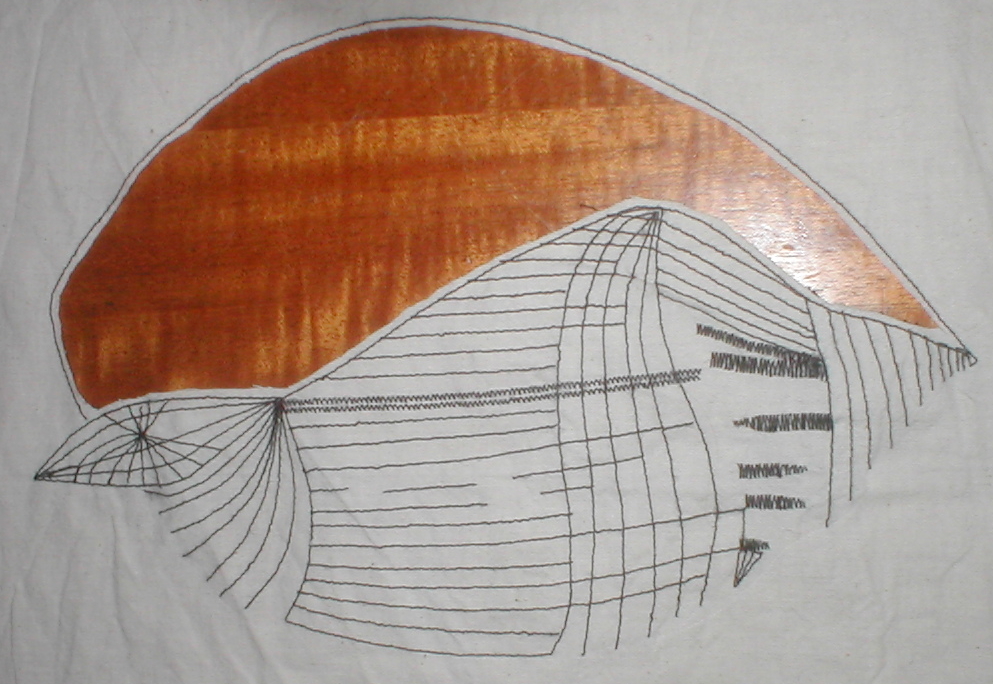
In the second view, the machining is complete, Stitch n' Tear removed, and the open area cut out (that is where the wooden table surface is visible).
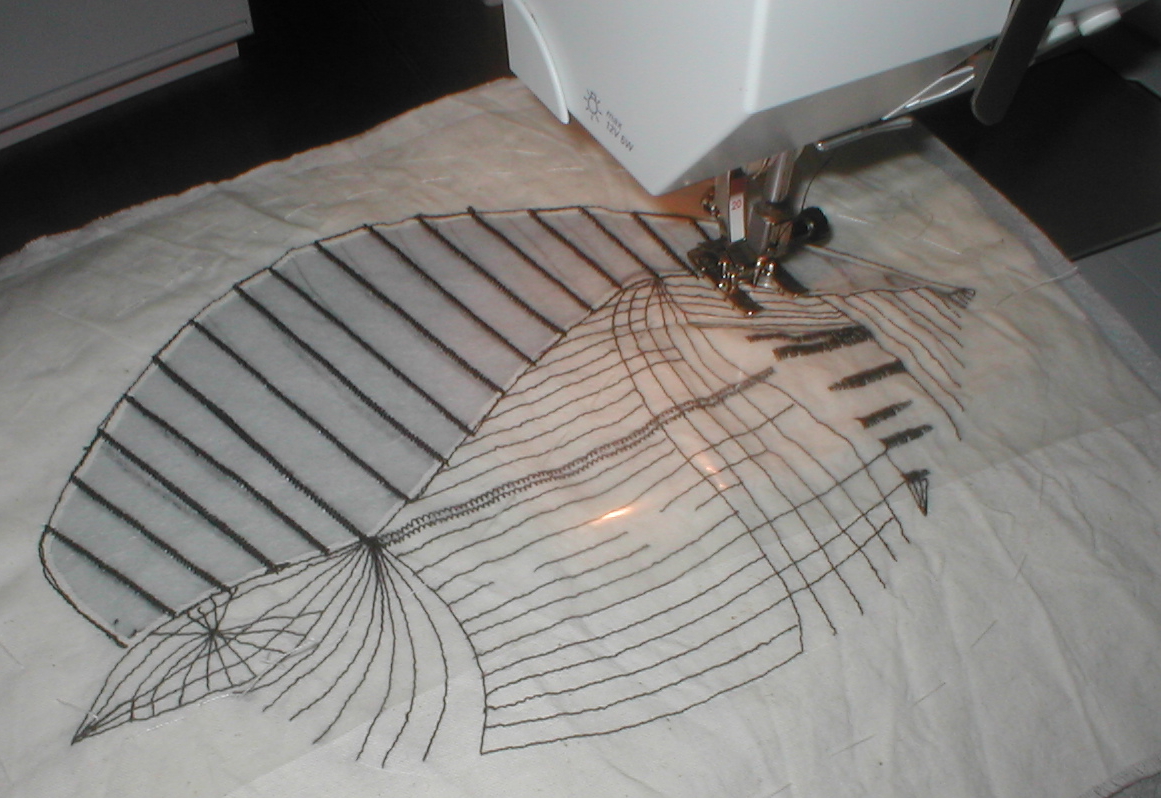
In the third view, the bars to be machined across the open area are drawn on Stitch n' Tear and placed behind the calico, the water-soluble fabric on top. Machining through all the layers is in progress. Each bar is made by straight-stitching across several times, and finally zigzagging to hold the rows together. When the bars are complete, they are secured by zigzagging all around the edge of the open area.
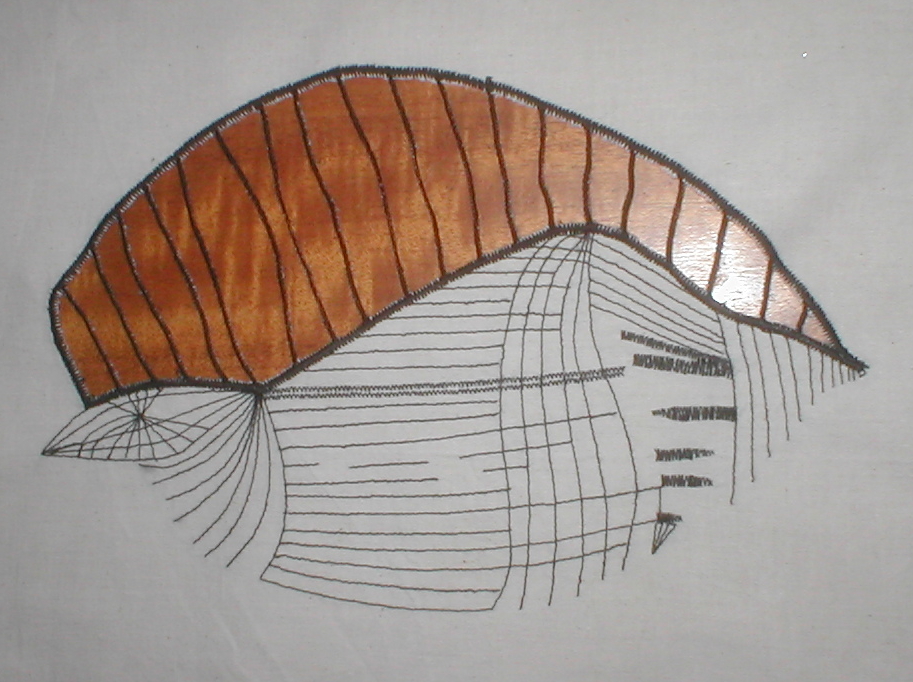
In the fourth view, the finished piece is seen with Stitch n' Tear removed and the soluble fabric dissolved (revealing the wooden table surface again).
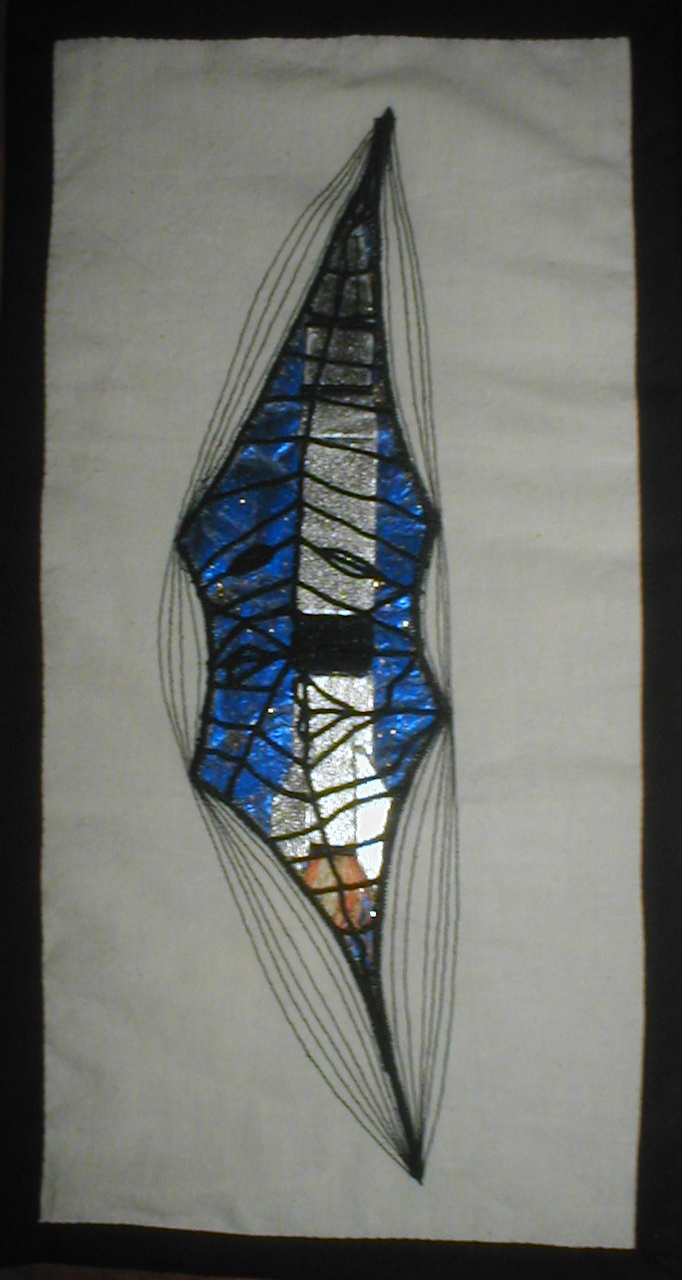
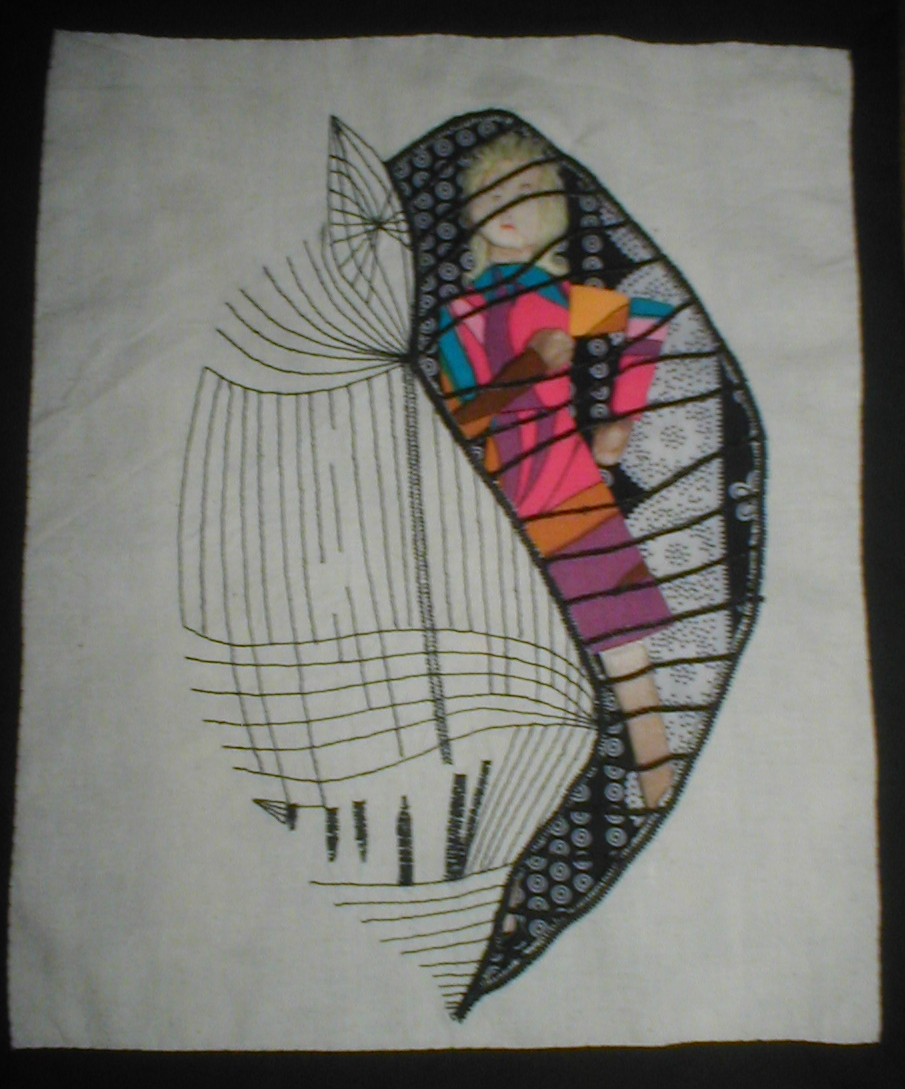
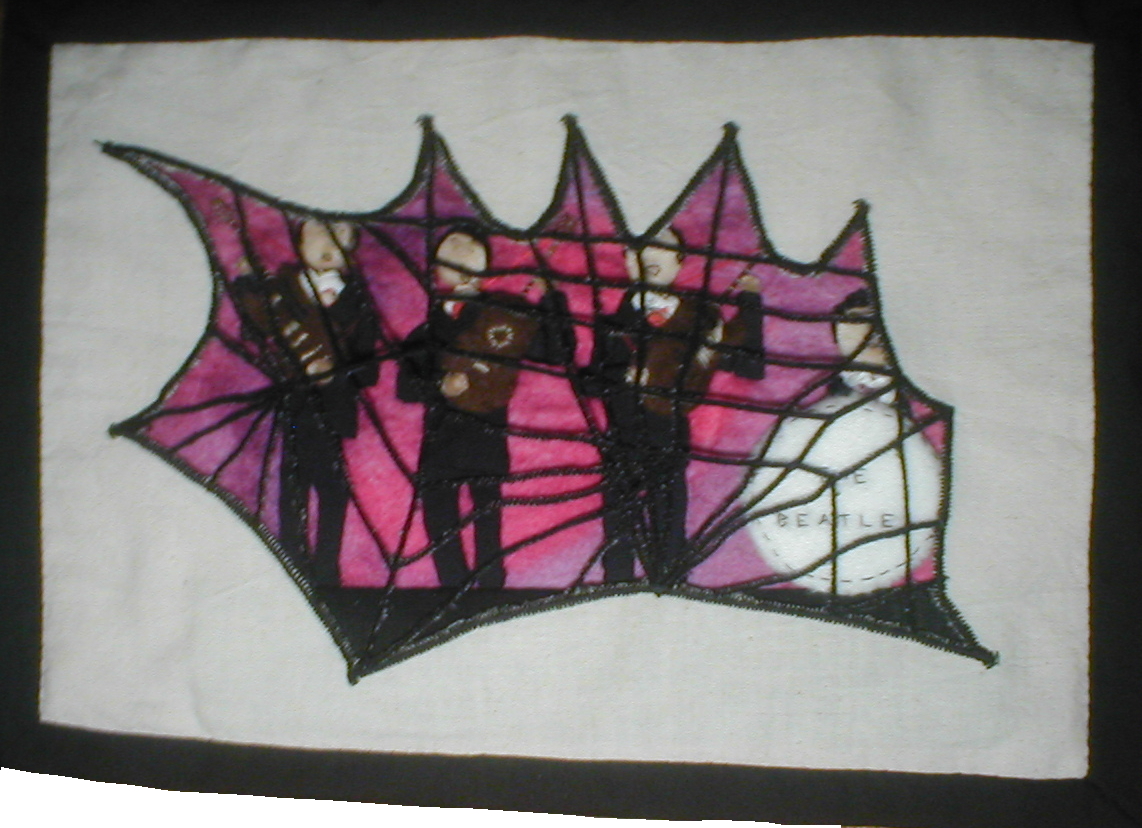
Each shell is placed on top of its corresponding image and held in place by binding the edges. I used black fabric for this as a reminder of the 1960s habit of framing pictures with black passe-partout. Finally, the three pieces are joined together to make the single hanging shown at the top of the page.